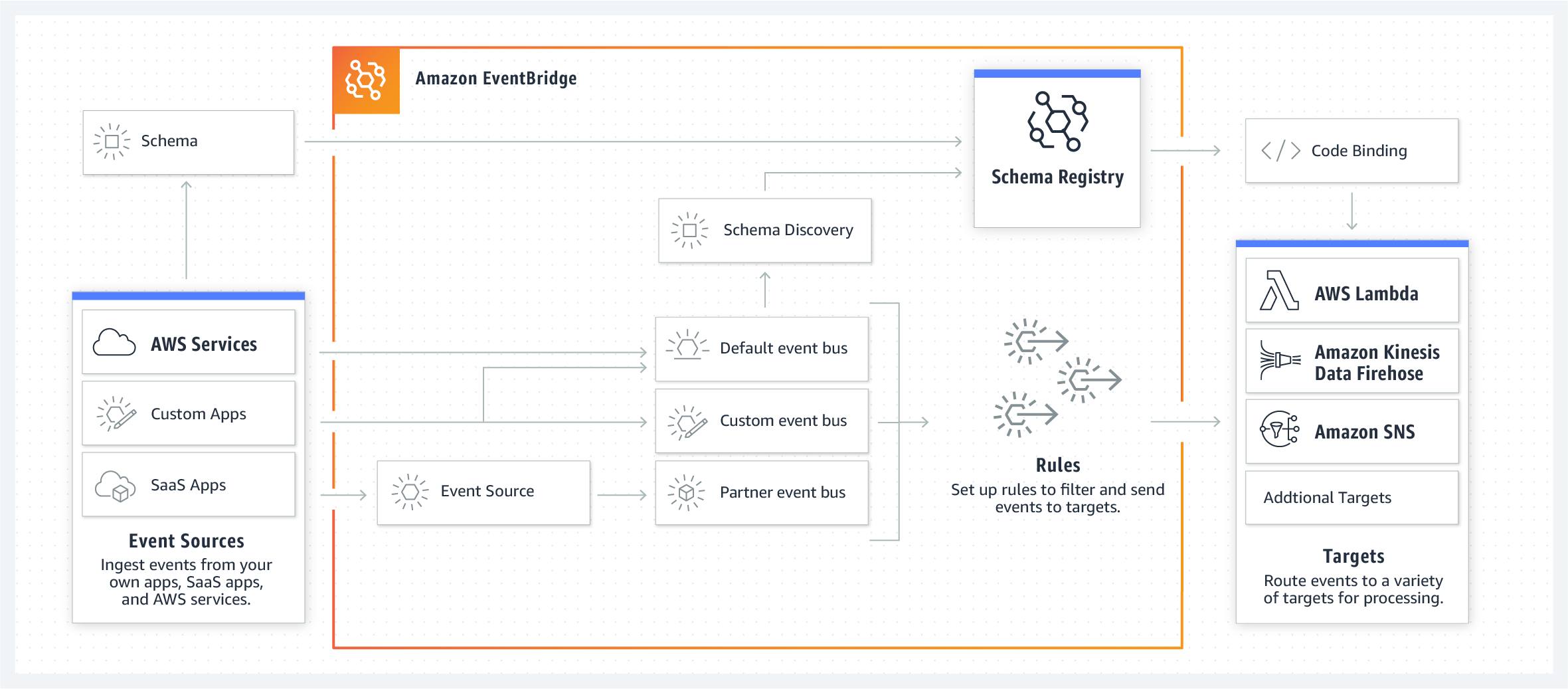AWS EventBridge
Serverless event bus that connects application data from your own apps, SaaS, and AWS services
Amazon EventBridge is a serverless event bus that makes it easy to connect applications together using data from your own applications, integrated Software-as-a-Service (SaaS) applications, and AWS services. EventBridge delivers a stream of real-time data from event sources, such as Zendesk, Datadog, or Pagerduty, and routes that data to targets like AWS Lambda. You can set up routing rules to determine where to send your data to build application architectures that react in real time to all of your data sources.
EventBridge makes it easy to build event-driven applications because it takes care of event ingestion and delivery, security, authorization, and error handling for you. As your applications become more interconnected through events, you need to spend more effort to find events and understand their structure in order to write code to react to those events. The Amazon EventBridge schema registry stores event structure - or schema - in a shared central location and maps those schemas to code for Java, Python, and Typescript so it’s easy to use events as objects in your code. You can connect to and interact with the schema registry from the AWS Management Console, APIs, or the SDK Toolkits for Jetbrains (Intellij, PyCharm, Webstorm, Rider) and VS Code.
How it works
EventBridge connects applications using events. An event is a signal that a system’s state has changed, such as a change in the status of a customer support ticket. To write code to react to events, you need to know the event’s schema, which includes information such as the title, format, and validation rules for each piece of event data. The EventBridge schema registry stores a collection of easy-to-find schema generated by your organization’s applications, AWS services, or SaaS applications. You can also download code bindings for any schema in the registry in your IDE, which enables you to represent the event as an strongly-typed object in your code.
